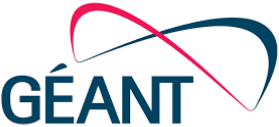Copper Networks and FTTH in Africa
Trusted by:


















Since the introduction of telecommunication systems in the 20th century, copper networks have been the backbone of the majority of communication infrastructure globally. Africa, with its vast landscape and varied levels of development, hasn’t been an exception to this trend.
However, as with all technology, copper networks have their limitations and are gradually being replaced by more advanced systems. In the context of telecommunication, these typically include fiber-optic networks like FTTH (Fiber to the Home), wireless broadband technologies, satellite communication systems, and more. These advanced systems offer higher data transmission speeds, greater reliability, and are often more sustainable and scalable than their copper-based predecessors.
How do Copper Networks Work
Copper networks primarily utilize twisted pair copper cables (like the ones used in traditional telephone lines) to transmit data. The analog voice data from a telephone is converted into electrical signals which travel over these copper lines. Similarly, for internet data, the modems modulate and demodulate digital data into electrical signals suitable for the copper medium.
Weaknesses and Disadvantages of Copper Networks
- Limited Bandwidth: Copper networks, especially those based on older ADSL technology, can only provide limited data speeds. This restricts the kind of internet services and quality of calls available to users.
- Attenuation and Noise: Over longer distances, copper cables suffer from signal degradation. This means that users farther from the central office or exchange experience slower speeds and poorer quality.
- Maintenance: Being a physical medium, copper is prone to wear and tear, environmental degradation, and even theft (due to the resale value of copper).
- Lack of Sustainability: Copper mining, a necessity for these networks, has environmental impacts including habitat destruction and pollution. Many mines in Africa have been cited for human rights violations and environmental harm.
- Exploitation of Natural Copper Resources: Africa holds a significant portion of the world’s copper reserves. This has led to over-extraction in some areas, often without fair compensation or benefits to local communities.
Transition to FTTH
FTTH involves running fiber optic cables directly to individual buildings like residences, apartment buildings, and businesses. The advantage of fiber optics is the use of light signals instead of electrical ones, offering vastly higher bandwidths and less signal degradation over long distances.
Connection between Copper Networks and FTTH
While copper networks have served as the primary means of telecommunication for decades, FTTH is rapidly becoming the preferred choice for several reasons:
- Superior Speed: Fiber can deliver gigabit speeds, a significant upgrade from the typical speeds of copper-based DSL.
- Reliability: Fiber optic cables are less susceptible to environmental conditions and physical degradation.
- Future-Proof: Fiber networks can be upgraded easily with newer technology without replacing the entire infrastructure.
Countries at the Forefront of FTTH Deployment in Africa
1. South Africa: South Africa has long recognized the potential of digital connectivity. Since the early 2000s, there has been a push to improve its digital infrastructure.
• Openserve: Originally part of Telkom, the major telecoms provider in South Africa, Openserve has become the largest fiber infrastructure provider in the country. Their network currently spans thousands of kilometers and services both urban and some rural areas.
• Rain: Though primarily recognized as a data-only mobile network, Rain also ventured into the fiber space. They offer fixed LTE but have shown interest in extending their offering into the FTTH domain.
• Deployment Strategy: South Africa’s FTTH strategy primarily revolves around urban centers like Johannesburg, Cape Town, and Durban. However, efforts are being made to extend fiber connectivity to smaller towns and even some rural regions.
2. Morocco: As part of its vision to become a key player in the global digital economy, Morocco initiated a digital strategy early on, aiming to enhance its infrastructure and connectivity, with FTTH being a prime focus.
• Maroc Telecom (IAM): As the leading telecommunications company in Morocco, Maroc Telecom has been pioneering the FTTH deployment. They began their rollout in major cities and have since expanded to more remote areas.
• Deployment Strategy: Morocco’s focus has been on establishing strong fiber backbone networks connecting major cities and regions. From this backbone, FTTH connections are then rolled out to individual homes and businesses.
• Government Role: The Moroccan government has actively partnered with private entities to co-finance and support the establishment of digital infrastructure, ensuring that FTTH reaches as many citizens as possible.
3. Kenya: Kenya’s capital, Nairobi, has always been an East African tech hub, colloquially known as “Silicon Savannah.” This tech-centric approach has fueled the need for robust digital infrastructure.
• Safaricom: Best known for its revolutionary mobile money platform, M-Pesa, Safaricom has also delved deeply into the FTTH space. By 2021, Safaricom had connected over 300,000 homes with fiber, with plans to expand even further.
• Liquid Telecom: Another major player in Kenya’s fiber scene, Liquid Telecom, has been instrumental in providing both FTTH and backbone fiber networks across the country.
• Deployment Strategy: Nairobi, Mombasa, and Kisumu have been primary targets for FTTH deployment. However, recognizing the potential of the digital economy, efforts have been geared towards connecting smaller towns and ensuring that businesses across the country have access to high-speed internet.

Countries Lagging Behind in FTTH Deployment
1. Chad: Landlocked and predominantly reliant on agriculture, Chad’s path to digital transformation has been tempered by various socio-economic challenges.
• Infrastructure: The overall telecommunication infrastructure in Chad is less developed, with most of its network being 2G and a gradual transition to 3G in urban centers.
• Internet Penetration: While there’s mobile internet access in major towns, rural areas often lack connectivity. FTTH, being a more advanced infrastructure, has not been a primary focus.
• Economic Factors: Chad’s reliance on oil exports for revenue, coupled with fluctuating oil prices, has posed economic challenges, restricting available funds for expansive projects like FTTH.
2. Central African Republic: The central African Republic (CAR) has witnessed decades of political instability, coups, and civil conflicts, making consistent development, including in the digital sphere, a significant challenge.
• Infrastructure: The majority of CAR’s telecom infrastructure is dated, with limited urban centers having 3G coverage.
• FTTH Presence: Due to the sporadic nature of development and ongoing instability, FTTH projects have been virtually non-existent.
• Role of NGOs and International Bodies: Given the political situation, many infrastructure projects, including those in the telecom sector, are often spearheaded by NGOs and international bodies, focusing more on immediate needs like mobile connectivity rather than extensive FTTH rollouts.
3. Somalia: Somalia has been grappling with civil wars, factional battles, and challenges in establishing a central government for decades. Despite this, there’s been a surprising resilience in the telecom sector.
• Mobile Technology: Somalia’s mobile technology adoption has been noteworthy, with a competitive market driving down prices and offering services even in remote areas.
• FTTH and Fixed-Line: Historical conflict and lack of centralized planning have left fixed-line infrastructure, including potential FTTH deployments, severely underdeveloped. The emphasis has been more on mobile broadband solutions.
• Private Sector Role: In the absence of strong centralized governance, private entities have played a crucial role in Somalia’s telecom advancements. The competitive nature of these private providers, while excellent for mobile proliferation, hasn’t yet translated into significant FTTH development.
Bridging the Digital Divide with VC4 IMS in Africa
In Africa, there are many network challenges (infrastructure, cost etc) and telecom operators grapple with a mix of legacy and modern network elements. VC4-IMS (Inventory Management System) presents a compelling solution for these challenges.
Integration of Legacy Systems:
Many African telecom operators rely on older systems that were implemented years ago. These legacy networks, while still functional, often operate in silos, making network-wide data access and visibility a significant challenge. VC4-IMS can seamlessly integrate with these systems, ensuring that data from older network elements can be accessed, viewed, and managed alongside more modern infrastructure components.
- Comprehensive End-to-End Visibility: One of the standout features of VC4-IMS is its ability to provide end-to-end visibility of network inventory data. By centralizing data from various network elements, operators can gain a comprehensive overview of their entire network. This is invaluable for operations like maintenance, capacity planning, and fault management. In Africa, where infrastructural challenges can make field operations difficult, such visibility can lead to significant operational efficiencies and cost savings.
- Facilitating Transition to Modern Networks: As African telecom operators aim to modernize their networks, the transitional phase can be complex. With systems like VC4-IMS, operators can maintain visibility and control over their network assets throughout this transition. This not only ensures smooth operations but also aids in strategic planning for phased network upgrades.
- Cost Savings: With accurate and real-time inventory data, operators can make informed decisions about resource allocation, network expansion, and maintenance. This can lead to tangible cost savings by preventing over-provisioning, reducing downtime, and optimizing resource utilization.
- Enhanced Customer Experience: End-to-end visibility and efficient management of network assets translate to better service quality and reliability. For African telecom operators, ensuring consistent and high-quality service can be a significant differentiator in competitive markets. With VC4-IMS, operators can proactively address network issues, plan for capacity needs, and ensure that end-users receive the best possible service.
From Copper Roots to Fiber Futures: Africa’s Digital Evolution
The shift from copper networks to FTTH in Africa is a manifestation of the broader global trend towards embracing higher capacity, more reliable, and sustainable communication infrastructures. While legacy networks present certain operational challenges, systems like VC4-IMS offer a bridge to the future, ensuring that operators can maximize their current assets while paving the way for modern, efficient, and customer-centric networks. The hope is that as the continent continues to grow and integrate, these disparities will decrease, providing all Africans with access to high-quality internet and communication services.



